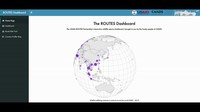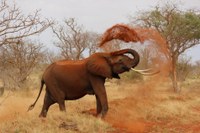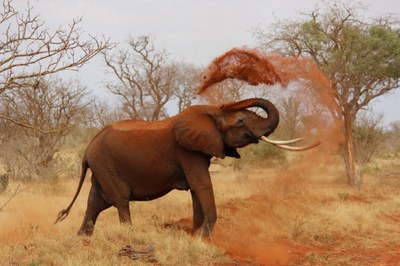Countering Wildlife Trafficking: The Sky is Off-Limits
Jun 19, 2019
The public is most aware of the more infamous forms of illicit wildlife trade like ivory and rhino horn. However, the products of these gentle giants are not the only forms of trafficked wildlife moving through airports. For example, the pangolin is a small, scaly anteater-like mammal native to regions in Africa and Asia, and while largely unknown it is the most trafficked mammal in the world; often trafficked for its scales, meat, and claimed medical properties.
Whether for medicinal consumption or to bulk up the domestic pet market, wildlife trafficking is a wide-spread issue and one in which airports are inevitably compromised.
No airport is safe from traffickers
Airports provide vast geographic connectivity which entices traffickers to use them for transporting wildlife from point A to point B most efficiently. Traffickers tend to identify global hubs and airports in biodiverse source regions and that are near demand markets. Smaller airports are also at risk as they are targeted to fly from areas near natural habitats to larger, international airports. This means there is not a single type of airport at risk of exploitation. Furthermore, traffickers tend to change their routes constantly to avoid detection, making any region and any airport size potentially vulnerable.
Reducing Opportunities for Unlawful Transport of Endangered Species (ROUTES) Partnership established a dashboard to provide in-depth graphics and information of the wildlife trafficked through airports from 2009 to 2019. As the dashboard demonstrates, the means, subjects, and breadth of the practice of wildlife trafficking is far-reaching, and inevitably difficult to combat. The ROUTES Dashboard demonstrates a visible spike in seizures of ivory in 2019, a feat worth congratulating whilst bearing in mind not all seizures are reported and this data reflects only open-source results of trafficking halts; not the full picture. Awareness is spreading, however, there is still work to be done.

Safety, integrity and conservation
One may ask, why should airport operators be concerned with the illicit wildlife trade?
- Health and Safety: The presence of wildlife and their products moving through airports, onto planes, and into other countries provides an imminent risk to health and safety; not only to that of passengers but once off the plane, wildlife carrying foreign viruses pose threats to the health of livestock, ecosystems, native wildlife and the human population.
- Reputation: Illicit trade exposes air transport industry’s reputation within the Global Value Chain. Breach in the integrity of the aviation sector may hamper industry’s reputation as the facilitator for global trade and economic development.
- Environment: The state of the world’s endangered species is increasingly more vulnerable. In conjunction with pollution and environmental degradation, wildlife trafficking propels susceptible populations of wildlife further towards extinction.
- Tourism: Loss of wildlife in regions known for their eco-tourism will result in a decline in passengers moving through those airports to participate in such tourism.
Spring into Action
Recognizing these risks, ROUTES launched Spring into Action; a campaign running from 1 May 2019 until 30 June 2019 which provides airports with the materials to raise awareness and “to strengthen operations against wildlife trafficking.” To coincide with the recent occasion of World Environment Day (June 5) and promote efforts toward wildlife conservation, here are the ROUTES proposed Fives Steps of Action to combat wildlife trafficking in the air-transport industry:

1. Make it Known: share information about wildlife trafficking and your commitments with staff and customers.
2. Make it Seen: hang posters, display videos, and utilize wildlife trafficking visual resource.
3. Make it Understood: have staff complete a ROUTES e-learning course or include wildlife information in current trainings.
4. Make it Social: share social media posts about your previous and ongoing efforts to combat wildlife trafficking.
5. Make it Last: connect with stakeholders, local enforcement staff and other industry resources.
Driving change
Airports and passengers alike have roles to play in tackling this issue. The Five Steps of Action provided by ROUTES are great ways for airports to begin. Airports can act as a facilitator to raising awareness of the issue and how to address wildlife trafficking. Mainstreaming this issue and its prevalence in airports is one of the first major achievements; ROUTES has hosted webinars to help provide companies with more information on how to best equip themselves with the resources the partnership provides. Airports now have the tools at hand to implement change, and many airports have already demonstrated their commitment to tackling this issue by signing onto the Buckingham Palace Declaration, an agreement committing to implement steps to halt wildlife trafficking. Through these efforts made industry-wide, wildlife trafficking in the air transport sector can find its resolution, one airport at a time.



